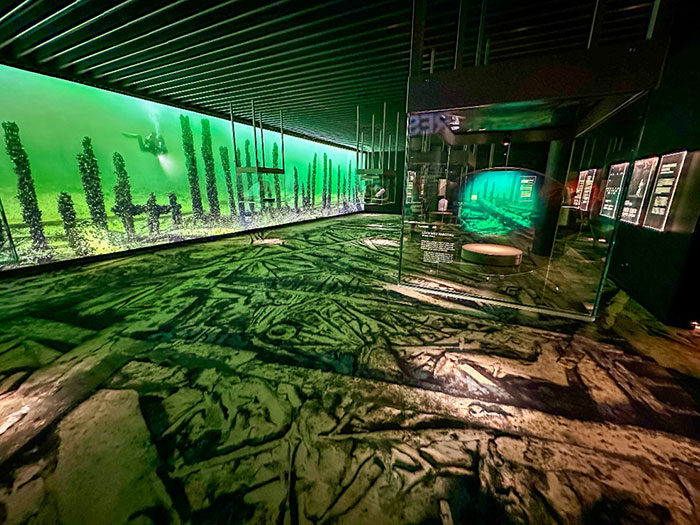22 Museums on a Green Oasis
How many museums can fit on an island of 279 hectares located a 30-minute walk from the city center of Stockholm, Sweden? The answer is 22.

The Royal Djurgarden, a green oasis in the centre of Stockholm, is enjoyed by more than 15 million domestic and international visitors annually, one and half times of the entire population of Sweden. The island also hosted the GSTC2024 Global Sustainable Tourism Conference, from April 23rd to April 26th, 2024, drawing a large crowd of 500 delegates from over 50 countries.
The Royal Djurgården has been a royal park since 1452, forty years before Columbus arrived in America. Today, Djurgården is known for being open and accessible, never closing, not even at night, and requiring no entrance fee. It is a cultural and natural destination, the green heart of Stockholm, and the great living room for the residents of Stockholm. In this living room, 22 museums are closely packed together, including two of Scandinavia’s most visited museums: Skansen and the Vasa Museum. Alongside the museums, there are theaters, music venues, restaurants, gardens, monuments, sculpture parks, and beautiful nature. The island has been a place for entertainment and recreation for hundreds of years.
As an urban destination in a capital city, the Royal Djurgården Society has been committed to long-term sustainable development. Their efforts were recognized with the Green Destination Platinum award in 2022 for structured work in accordance with the UN Sustainability Goals. Over 60 attractions cooperate by setting both short-term and long-term sustainability goals. The stakeholders cherish the cultural heritage and connect it with Sweden’s vision for a more resilient future.
Among the 22 museums, I want to introduce two particular ones that stand out in their sustainable effort.
First is Skansen, the world’s first open-air museum, founded in 1891. Skansen is arguably the most popular museum in Sweden with some 150 historically interesting houses and farmsteads moved to the museum over the years from all over Sweden to preserve their original materials and beauty. Beyond the historical side, Skansen is also a zoo hosting 75 different species and breeds of Scandinavian domestic and wild animals, including ocean life from the Baltic Sea. The museum also has several gardens, with the Rosendals Garden being known for its biodynamic farming practices. The garden grows flowers and vegetables in living soil, providing healthy and nutritious conditions for plants to thrive in a chemical-free environment. It also serves as an educational facility, teaching the new generation that it is possible to integrate animals and organically grown crops.
Biodynamic farming is a form of sustainable agriculture that is more advanced than organic farming by emphasizing harmony with nature. It views the entire farming environment as a living organism, valuing the interconnected ecosystem of soil, plants, animals and insects under the soil and above, and humans. It also involves conducting farming activities in sync with natural rhythms and cycles, such as the phases of the moon and seasonal changes. This approach also serves an educational role, teaching the new generation the importance of integrating animals, insects, and plants within a single environment.
For example, when it is time to harvest kale, both humans and caterpillars love to eat fresh kale. Normally, caterpillars would devour all the kale in one or two nights. However, due to biodynamic farming, wild birds are able to come and eat the caterpillars, allowing the garden to save the kale without using net or chemicals.
Second is the Museum of Wrecks. The Baltic Sea is the world’s greatest cultural heritage littered with shipwrecks, well preserved under unique conditions. Unlike traditional museums that use real artifacts for the exhibition, the Museum of Wrecks uses technology to provide visitors with immersive experiences without disturbing the artifacts under the sea. The exhibition of the shipwreck Resande Man (“Travelling Man”) allows visitors to walk on a full-scale carpet of the wreck, surrounded by photos taken from inside the shipwreck. The objects excavated from the ship are projected in glass cases, displayed in the same places on the ship where they were found, highlighted by a light beam. Although no real artifacts are displayed, the immersive experience, complete with the sounds of divers underwater, brings visitors to the shipwreck while keeping the original site untouched. The museum is also considering incorporating AR/VR technology to live stream diving explorations, allowing visitors to see the rare sight of a shipwreck firsthand.
The Royal Djurgården is a living example that an urban tourism destination can achieve sustainability while attracting millions of visitors. By working together and finding common goals to reduce human impact, stakeholders can preserve the nature and culture of the area. Would you visit this beautiful island next time you are in Stockholm?
(KY)
【Source】
Rosendals Trädgård
https://www.rosendalstradgard.se/english/
【Reference】
https://sustainable.royaldjurgarden.se/en/home-en/
https://www.gstcouncil.org/largest-gstc-global-conference-stockholm-2024/
https://www.vrak.se/en/visit-the-museum/exhibitions/resande-man/
